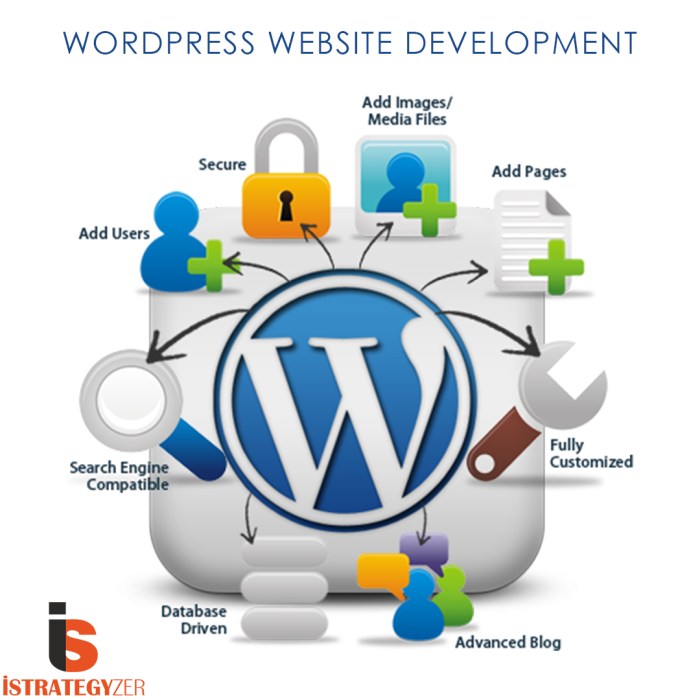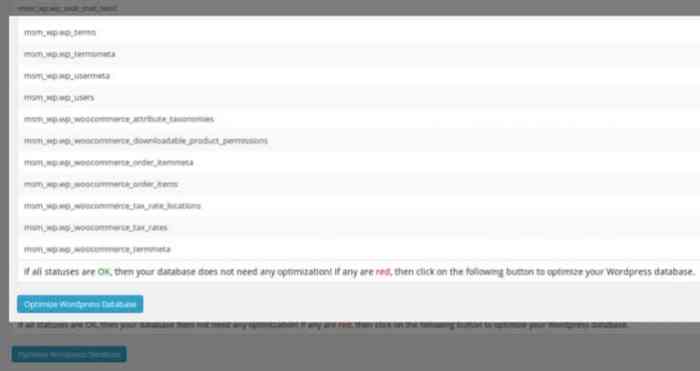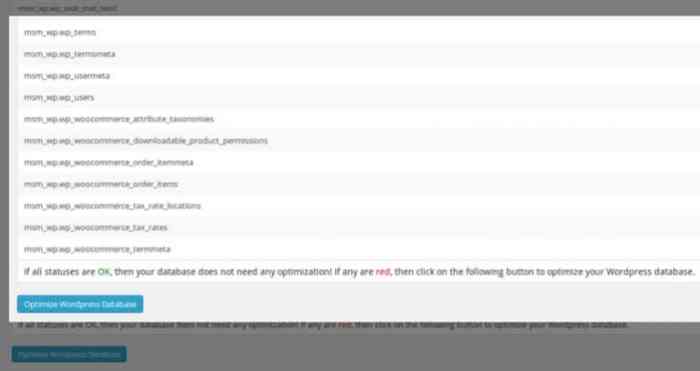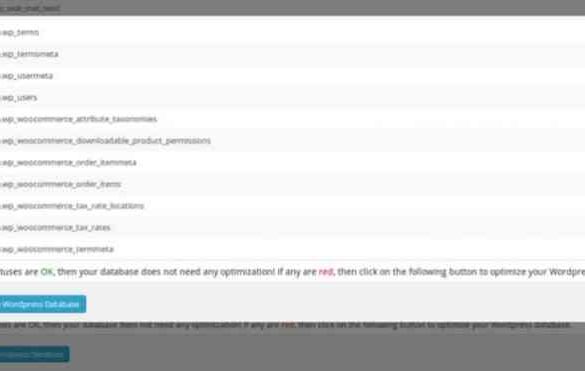How to efficiently manage post series in WordPress is crucial for creating engaging content and boosting your blog’s visibility. This comprehensive guide dives deep into every aspect of crafting, organizing, and promoting impactful post series. From choosing the right plugins to analyzing performance data, we’ll cover it all, ensuring your series becomes a resounding success.
Imagine a steady stream of captivating content, perfectly structured and consistently delivered. This detailed guide will equip you with the strategies and tools to turn your post series dreams into reality. Learn how to create a consistent publishing schedule, optimize for search engines, and track the results, all while avoiding common pitfalls.
Introduction to Post Series Management in WordPress
Post series are a powerful content strategy tool in WordPress. They allow you to group related posts, offering a comprehensive exploration of a topic, engaging readers with in-depth coverage, and building authority on a specific subject. Effective post series attract returning visitors, establish a loyal readership, and enhance performance by creating a robust content pillar structure. By presenting information in a structured and cohesive manner, post series improve user experience and establish a strong content presence.Common challenges in managing post series include maintaining consistency, adhering to a schedule, and ensuring seamless transitions between posts.
Without proper planning, series can easily fall apart, leaving readers frustrated and losing interest. This often stems from a lack of clear organization and a defined workflow. Successfully managing a series requires a clear vision, strong organizational skills, and a well-defined publishing schedule.
Organizing and Structuring Post Series
Organizing a post series is crucial for maintaining reader engagement and achieving your content goals. Different structures cater to various needs and content types. A chronological structure, for example, is ideal for narratives or events. A topical structure, however, allows you to explore different facets of a complex subject. A hierarchical structure is useful when breaking down a topic into smaller, manageable pieces.
- Chronological Structure: This approach is best for showcasing a journey, a process, or a story unfolding over time. For instance, a series about the history of a city could present events in the order they occurred.
- Topical Structure: Ideal for exploring different aspects of a broad topic, this structure allows you to delve into specific facets and examine them individually. A series about digital marketing, for example, might cover topics such as , social media, and email marketing.
- Hierarchical Structure: This approach is effective when a topic is complex and requires a deeper exploration of its various s. For example, a series on writing a novel might cover research, outlining, drafting, editing, and publishing.
Creating and Publishing a Post Series Workflow
A well-defined workflow streamlines the creation and publication of your post series, ensuring consistency and avoiding delays. A clear process from ideation to publishing is essential.
- Ideation and Planning: Begin by defining the topic, target audience, and desired outcome of the series. Create a comprehensive Artikel, including s, target audience, and desired outcome. Establish a schedule and allocate resources accordingly. Consider how many posts are needed and how long each will take to write.
- Content Creation: Develop high-quality, engaging content for each post in the series. Maintain a consistent tone and style. Research and fact-checking are crucial to ensure accuracy. Remember to incorporate images, videos, and other multimedia elements to enhance reader engagement. Plan how these elements will be incorporated to make the series visually appealing and informative.
- Content Editing and Review: Thoroughly edit each post for grammar, spelling, and clarity. Seek feedback from colleagues or beta readers to ensure the content is well-received. Verify all facts and figures for accuracy.
- Scheduling and Publishing: Create a content calendar to ensure regular and timely publishing. Choose a publishing schedule that works best for your audience and content. Consider using WordPress’ built-in scheduling features to automate the process.
Choosing the Right WordPress Plugin for Post Series

Selecting the right WordPress plugin for managing post series is crucial for organizing content effectively and enhancing user experience. A well-chosen plugin streamlines the creation and presentation of related posts, improving site navigation and . The ideal plugin should seamlessly integrate with your existing WordPress setup and offer features that cater to your specific needs.This section explores popular post series plugins, highlighting their features, functionalities, pros, and cons.
We’ll also examine plugins with custom post types, providing valuable insights into their implementation and potential benefits.
Popular WordPress Post Series Plugins
Various plugins are designed to manage post series in WordPress. Understanding their features and limitations is essential for selecting the most suitable option. Comparing these tools allows for informed decisions and optimal implementation.
- Yoast : While primarily known for optimization, Yoast offers basic post series management through its advanced features. It enables grouping related posts by assigning categories and tags. This approach is straightforward for simple series but may lack advanced features for complex setups.
- Table of Contents Plus: This plugin creates automatic tables of contents for posts and pages. While not explicitly designed for post series, it can aid in organizing series by automatically linking relevant posts. Its strength lies in enhancing post structure, aiding in navigation, and promoting benefits.
- Post Series Manager: This plugin is specifically designed for managing post series. It offers tools for creating, organizing, and displaying series in a user-friendly way. The plugin’s advanced features, including custom post types and meta boxes, make it a compelling option for complex post series structures. However, the complexity of setup and the steeper learning curve should be considered.
- Advanced Custom Fields: While not a dedicated post series plugin, Advanced Custom Fields provides the flexibility to create custom fields for post series data. This allows you to store information about series, enabling custom display and organization within WordPress. This plugin is suitable for unique post series structures that require custom metadata.
Plugin Feature Comparison
Evaluating plugin features is essential for selecting the right tool. A comprehensive comparison aids in understanding strengths and weaknesses.
| Plugin | Custom Post Types | Meta Boxes | Series Display Options | Integration |
|---|---|---|---|---|
| Yoast | No | Limited | Basic | Yes |
| Table of Contents Plus | No | No | Automatic TOC | Indirect |
| Post Series Manager | Yes | Yes | Advanced | Limited |
| Advanced Custom Fields | No | Yes | Customizable | No |
Plugins with Custom Post Types for Post Series
Custom post types allow for tailored management of post series. This flexibility offers granular control and organization. Post Series Manager, for example, allows the creation of a custom post type specifically for post series, enabling more complex structures.
- Post Series Manager excels in this area, providing a dedicated post type for managing series data, enabling advanced control over the content organization.
Organizing and Structuring Post Series
A well-organized post series is crucial for reader engagement and . Clear structure ensures readers can easily navigate the content, understand the progression, and discover related topics. This clarity also helps search engines understand the series’s theme and value, leading to better rankings.Effective organization goes beyond simply publishing posts; it involves thoughtful planning and strategic implementation. The methods used to structure a post series dictate how readers experience the content, influencing their understanding and overall satisfaction.
Using Categories and Tags
Categories and tags are fundamental WordPress tools for organizing content. Categories provide broad, hierarchical classifications, while tags offer more specific, -based labels. A well-structured series might use a category like “Productivity Hacks” and tags like “time management,” “focus techniques,” or “goal setting.” This combination allows readers to find specific posts while also navigating broader themes. For a post series about a specific topic, consider using a dedicated category to group all posts within that series, making it easily accessible.
Employing Custom Taxonomies
Custom taxonomies provide a powerful way to create tailored classifications for a post series. Imagine a series on “Sustainable Living.” Instead of relying solely on general categories, you could create custom taxonomies like “Eco-Friendly Products,” “Sustainable Practices,” or “Green Travel.” These specialized labels enhance the searchability and navigation within the series, allowing for highly focused retrieval of information.
This allows for more specific and detailed categorization, which is particularly useful for intricate or specialized topics.
Creating a Logical Structure
A clear and logical structure for a post series enhances the reader’s experience. Numbered lists, chronological order, or thematic groupings are common and effective approaches. Using numbered lists allows for a step-by-step approach, especially useful for tutorials or guides. Chronological order works well for historical accounts or narratives. Thematic groupings organize posts based on shared concepts, suitable for series exploring a multifaceted subject.
The choice depends on the nature of the series and the desired reader experience.
Internal Linking Strategies
Internal linking is vital for a successful post series. It creates connections between posts, allowing readers to easily explore related content. Linking to previous posts in the series reinforces the progression and allows for deeper understanding of the topic. Linking to relevant posts outside the series can also broaden the reader’s knowledge and enhance the overall value of the content.
By linking appropriately, you create a rich network of interconnected information.
Examples of Post Series Structures
- Numbered Lists: A series on “Learning a New Language” might use numbered steps to detail the learning process, with each post focusing on a specific step. This approach is excellent for instructional series, where the order of steps is crucial.
- Chronological Order: A post series about “The History of Photography” could follow a chronological timeline, each post covering a different era. This is effective for storytelling and historical accounts.
- Thematic Groupings: A series on “Investing for Beginners” might group posts based on specific investment strategies, such as “Stock Market Investing,” “Real Estate Investing,” or “Cryptocurrency Investing.” This structure is ideal for series exploring diverse aspects of a broad topic.
Managing Post Series Revisions and Updates
Maintaining a consistent and up-to-date post series requires a strategy for handling revisions and updates. This involves not only keeping the content accurate but also preserving a history of changes for future reference and potential restoration. Efficient revision management is crucial for maintaining a high level of quality and user experience within a post series.Effective revision management in post series allows for easy tracking of changes, making updates smoother and more controlled.
Organizing post series in WordPress can be a breeze with a little planning. Categorizing and tagging posts effectively is key, and using custom post types can streamline things further. Knowing how to manage your business’s legal requirements, like business licenses what you need to know , is equally important for a smooth operation. This groundwork ensures you can focus on crafting great content, rather than getting bogged down in administrative details, making your post series management process much more efficient.
This also provides a safety net in case errors occur during an update, allowing for a quick rollback to a previous version.
Revision Tracking Methods
Maintaining a detailed record of changes in a post series is vital for quality control and troubleshooting. Different methods can be used to track revisions, each with its own advantages and disadvantages.
Organizing post series in WordPress can be a breeze if you know the right tricks. Knowing how to efficiently categorize and tag posts is key, but sometimes you need to remove a post entirely. For instance, if you need to delete an outdated or irrelevant post, learning how to delete post in WordPress how to delete post in wordpress is important for maintaining a clean and organized blog.
This makes managing your post series much easier, allowing you to focus on creating engaging and relevant content.
- WordPress’s built-in revision system provides a basic but functional way to track changes. This system automatically saves previous versions of posts, enabling users to revert to older versions if needed. However, this approach may not be sufficient for complex post series management. Its limitations include potential storage limitations and a less structured approach to tracking specific revisions within the series.
- Dedicated plugins can provide a more comprehensive approach to revision management. These plugins often offer features like versioning, labeling, and comments on revisions. This allows for more granular control over the history of changes and easier identification of specific updates within the post series. Choosing a suitable plugin that integrates well with your WordPress theme and workflow is key for maximizing its effectiveness.
Updating and Maintaining Post Series
Regular updates are essential for maintaining the relevance and accuracy of a post series. A well-defined schedule for updates helps ensure consistency and keep the information current.
- Establishing a schedule for updates based on the subject matter and expected changes is vital. This schedule could be monthly, quarterly, or even more frequent depending on the topics covered in the series.
- Implementing a structured approach to updates, like creating a changelog or documentation of changes, will greatly help in maintaining a consistent level of information and ensuring that updates are well-documented.
Version Control for Post Series
Version control systems, similar to those used in software development, can significantly improve the management of post series revisions. These systems allow for a detailed history of changes, enabling easy rollback to previous versions and a clear audit trail of modifications.
- Implementing version control allows for the tracking of all changes made to individual posts within the series. This can be especially useful when multiple authors are contributing to the series, or when complex updates are made. Version control tools offer an additional layer of security by storing every revision.
- Using a version control system for post series allows for a more organized and efficient approach to updating. It helps avoid errors by allowing the identification of specific issues during the updating process, and providing a detailed history of revisions, facilitating the restoration to previous versions if needed. This is crucial for maintaining a high level of quality and user experience.
Analytics and Measuring Post Series Performance

Understanding how your post series performs is crucial for optimizing future content and maximizing engagement. Tracking key metrics allows you to identify what resonates with your audience and refine your strategy for creating compelling and successful series. This knowledge empowers you to tailor your approach and focus your efforts on topics that generate the most interest and interaction.Analyzing data from post series provides valuable insights into audience preferences and content effectiveness.
By examining metrics like views, shares, and comments, you can gain a clear picture of which posts within a series are most popular and which aspects of the series are generating the most interest. This understanding can guide future series development and content creation, leading to a more targeted and engaging experience for your readers.
Importance of Tracking Post Series Performance
Tracking post series performance is vital for continuous improvement. Knowing which posts resonate most with your audience helps you tailor future series to better meet their needs and interests. Analyzing metrics provides data-driven insights into what works and what doesn’t, enabling you to optimize content strategies and maximize engagement. This allows for a more strategic approach to content creation, leading to higher quality and more impactful post series.
Want to supercharge your WordPress post series? Organizing them efficiently is key, especially when you’re planning a series of articles that connect with a broader marketing strategy. Think about how a well-structured post series can help you build anticipation and engagement with your audience. This is where strategies like five tactics to skyrocket your small business marketing come into play.
Using these tactics can help you build a compelling narrative that keeps readers coming back for more. Effective post scheduling and keyword research will ultimately make your series even more successful.
Metrics for Measuring Success
Several metrics provide valuable insights into the performance of your post series. These include:
- Views: Tracking the number of views for each post in a series helps understand overall interest and reach. High view counts indicate strong interest in the topic, while lower view counts might signal areas for content improvement or adjustments to the series’ promotion.
- Shares: Shares demonstrate how much your audience values and finds the content valuable enough to share with others. High share numbers indicate that your series resonates with a wider audience and provides significant value. Analyzing which posts are shared most frequently provides valuable insight into what your audience finds most engaging.
- Comments: Comments are a direct measure of audience engagement and interaction with your content. Active discussion suggests that your series is sparking meaningful conversations and fostering community around the topics. Qualitative analysis of comments helps to identify areas for further development or adjustments in future series.
Analyzing Data to Identify Areas for Improvement
Data analysis is key to refining your post series. By examining viewership, shares, and comments, you can identify trends and patterns. For example, if certain posts in a series receive significantly higher engagement, it suggests that those particular topics or approaches are resonating well with your audience. This understanding allows you to replicate successful elements and adapt less successful ones for future series.
Detailed analysis helps identify areas where you can enhance the content or its presentation to maximize engagement.
Comparing Analytical Tools for WordPress Post Series
The following table compares various WordPress plugins that provide analytics for post series.
| Plugin | Key Features | Pros | Cons |
|---|---|---|---|
| Yoast | Comprehensive tools, including sitemaps, readability scores, and social media sharing. | Wide range of features, easy integration with WordPress. | Limited focus on post series analytics, may require additional plugins for detailed tracking. |
| Google Analytics for WordPress | Integrates with Google Analytics for detailed website traffic data. | Accurate data, powerful insights into website traffic, including post series performance. | Requires a Google Analytics account, might be complex for beginners. |
| MonsterInsights | Provides WordPress site analytics, including visitor demographics and engagement metrics. | Detailed insights into website performance and user behavior. | Paid plugin, potential for overwhelming data for beginners. |
| WP Statistics | Tracks various website metrics, including page views, visitor locations, and referring sites. | Free and easy to use, offers comprehensive basic stats. | May not provide advanced analytics specific to post series. |
Troubleshooting Common Post Series Issues: How To Efficiently Manage Post Series In WordPress
Managing a post series in WordPress can be rewarding, but unexpected hiccups can arise. From plugin glitches to scheduling snags, understanding how to troubleshoot these issues is crucial for maintaining a consistent posting schedule and audience engagement. This section will detail common problems and provide actionable steps for resolving them.Troubleshooting post series problems often requires a methodical approach.
Identifying the source of the issue is the first step, followed by implementing appropriate solutions. Careful record-keeping of the steps taken can aid in future problem-solving.
Identifying Plugin Conflicts
Plugins are powerful tools, but they can sometimes clash with each other or with your theme. Incompatible plugins can disrupt post series management, leading to errors in publishing or scheduling.
- To identify plugin conflicts, deactivate plugins one by one. Observe if the issue persists after each deactivation. If the problem disappears, the deactivated plugin is likely the culprit. Carefully review the plugin’s documentation to see if any known conflicts exist with your theme or other plugins.
- Activating plugins in a phased approach, or in the order in which they were installed, can help to pinpoint conflicts quickly.
- If multiple plugins are suspected, consider using a plugin compatibility checker or testing different plugin versions to see if that solves the problem. Keep a detailed log of plugins tested and their status.
Addressing Scheduling Issues
Maintaining a consistent posting schedule is key for audience engagement and . Unexpected delays can disrupt the flow of your series.
- Ensure your WordPress server time is accurate. Inaccurate server time can lead to scheduling issues, where posts are published at incorrect times or not published at all.
- Verify the scheduling settings of your WordPress plugin. Double-check that the correct date and time are set for each post. Pay close attention to any error messages displayed by the plugin.
- Sometimes, temporary issues with your internet connection can affect scheduling. Ensure a stable internet connection is maintained during the scheduling process.
Managing Post Revisions
Revisions, while useful for editing, can sometimes cause confusion or slow down the publishing process. Managing them efficiently is important for maintaining a consistent flow of content.
- Regularly review and delete unnecessary revisions. This frees up storage space and prevents potential conflicts when publishing new content.
- Utilize the WordPress revision history feature to revert to previous versions if necessary. This feature allows you to easily recover from errors.
- Implementing a system for labeling or categorizing revisions can be useful when dealing with large series. This will make it easier to identify and track revisions.
Maintaining a Consistent Posting Schedule
A consistent posting schedule is critical for audience engagement. Unforeseen circumstances can disrupt this schedule.
- Plan ahead. Develop a detailed content calendar that includes anticipated issues and their possible solutions. This approach can mitigate the impact of unforeseen delays.
- Utilize buffer content. Having a small pool of already written or drafted posts can allow you to quickly substitute content in case of an unexpected delay.
- Communicate any delays to your audience. Transparency builds trust. Inform your readers about any interruptions in your posting schedule. This approach shows respect for their engagement.
Advanced Post Series Strategies
Taking your WordPress post series beyond basic organization requires strategic thinking. Advanced techniques focus on optimizing performance, engaging readers, and leveraging the full potential of your content. This often involves considering audience engagement beyond the immediate blog post. This section will explore these advanced strategies.
Optimizing Post Series Performance, How to efficiently manage post series in wordpress
Post series success hinges on consistent quality and engagement. Several strategies can significantly enhance performance. These include optimizing for search engines, ensuring high-quality images and videos, and creating compelling internal links. Search engine optimization () plays a crucial role. Optimizing individual posts within the series for relevant s can improve visibility in search results.
High-quality visual content enhances reader experience and encourages longer engagement times. Internal linking between related posts in the series strengthens the user journey and improves website navigation.
Leveraging Email Marketing for Post Series Promotion
Email marketing provides a direct channel to promote post series to your subscriber list. Building anticipation and providing exclusive content to email subscribers can significantly enhance post series engagement. A well-crafted email sequence announcing a new post series and highlighting individual installments can attract a broader audience. Early promotion can create buzz and drive traffic to your website.
Different Post Series Formats for Maximum Engagement
Varying post series formats keeps readers engaged and avoids monotony. Different approaches, such as interviews, round-up posts, or step-by-step guides, can offer diverse perspectives and formats. Exploring diverse approaches can make the series more engaging and rewarding.
Comparison of Post Series Formats
| Format | Description | Effectiveness | Example |
|---|---|---|---|
| Interview | Featuring experts or individuals with relevant knowledge. | High engagement, builds credibility. | Interviewing industry leaders about the future of AI. |
| Round-up Post | Summarizing various viewpoints or resources. | Useful for collecting information and providing diverse perspectives. | Summarizing different opinions on the best social media marketing strategies. |
| Step-by-Step Guide | Breaking down a complex topic into manageable steps. | High value for readers needing practical guidance. | Creating a guide on how to start a successful online business. |
| Case Study | Analyzing a real-world example of a concept or strategy. | Provides practical insight and strengthens engagement. | Analyzing the success of a particular marketing campaign. |
The table above highlights various post series formats. Choosing the right format depends on the nature of the content and the target audience.
Final Wrap-Up
We’ve explored the entire lifecycle of a successful WordPress post series, from initial planning to final analysis. By combining effective organization, strategic promotion, and meticulous tracking, you can elevate your content strategy and build a loyal audience. This guide has armed you with the knowledge to create compelling series that resonate with readers and drive your WordPress blog forward.
Now go forth and conquer!









